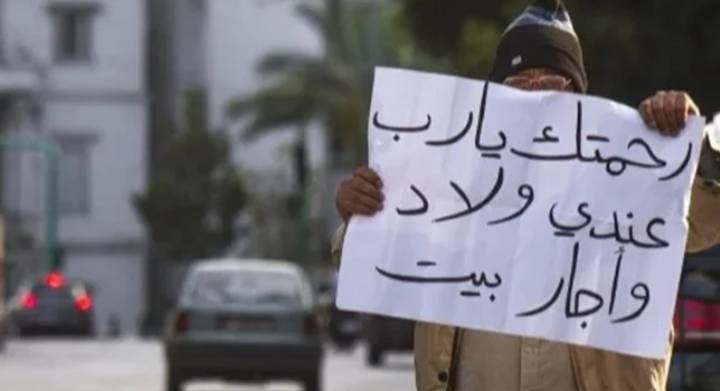Lebanon seeks to increase the number of beneficiaries from social assistance programs this year to 225,000 families, approximately a quarter of the Lebanese residents, through two assistance programs implemented by the Ministry of Social Affairs and a third program that has stumbled in funding so far. This is alongside international aid to support the poorest Lebanese families and the education sector in Lebanon.
International aid flows in two directions: the first aimed at funding food programs and personal assistance for the most impoverished families since the onset of the Lebanese crisis in 2019, which has diminished citizens' purchasing power. The second direction is towards education, the most recent announcement coming from the World Bank’s Regional Director for the Middle East, Jean-Christophe Carret, during a meeting with the caretaker Prime Minister Najib Mikati, regarding assistance for the education sector worth about 25 million dollars earmarked for teachers in public education, focusing on productivity and teacher attendance at schools.
Two days prior to this announcement, the European Union announced the launch of two new initiatives worth 25 million euros to support vulnerable groups in Lebanon and combat food insecurity. This funding provides direct aid to 7,245 poor Lebanese families (over 41,000 individuals) registered in the national program to support the poorest families, representing the social safety net in the country, implemented by the government in collaboration with the World Food Program, and aims to support agricultural and food systems that enable Lebanese people to meet their food needs.
Some Lebanese families rely on aid due to the economic, financial, and living crises that have affected their livelihoods and significantly diminished their purchasing power. Assistance varies from local organizations, civil associations, and international organizations, in addition to government support. Although support began 11 years ago with the “National Program for the Poorest Families,” aid increased in 2021 after the COVID-19 crisis, with the announcement of two programs for which registration occurs on the “Support” platform.
The "Aman" program became operational in March 2022, while the "Cash Card" program has struggled to launch due to Lebanon's failure to secure funding for it. Lebanese ministerial sources told the "Middle East" that both the "Aman" program and the "Cash Card" program are funded by the Lebanese government through loans from the World Bank, while the "National Program for the Poorest Families" is funded by international donor entities in the form of grants, confirming that assistance from both programs "is disbursed in cash in US dollars." The "Cash Card" project was not implemented because the World Bank, which was supposed to provide funding in the form of a loan to the Lebanese government, "linked the disbursement of the loan to a comprehensive reform plan and an agreement with the International Monetary Fund, which has not yet been achieved."
Families in both programs receive a monthly amount of 20 dollars for each family member (up to a maximum of 6 members), in addition to a fixed amount of 25 dollars per family. The “Aman” program also aims to assist 87,000 students aged between 13 and 18 (from beneficiary families) registered in public schools in both general and vocational tracks, in addition to school fees that are paid directly to schools and transportation expenses.
Sources monitoring the assistance programs in the Ministry of Social Affairs, which implements both programs, indicated that there are currently two programs to support the poorest families in Lebanon. They noted that efforts are ongoing to implement them, with 150,000 families expected to benefit from the “Aman” program (for one year) and 75,000 families from the “National Program for the Poorest Families,” meaning about 225,000 poor families in Lebanon will receive, or have received, monthly financial support in dollars.
If we estimate an average of about 6 individuals per family, this means approximately 1.3 million people have benefited or will benefit from the assistance, comprising about a quarter of the resident Lebanese population. By November of last year, the number of families benefitting from the monthly transfers from the “Aman” program reached 75,000, with a total disbursement amounting to 77 million dollars.
The sources stated that the “Aman” program is a loan of 246 million dollars benefiting a total of 150,000 families, explaining that those who benefited for a year will not benefit in the following year. It includes all the poorest segments across all Lebanese regions, but excludes military personnel and public sector employees who benefit from other programs and assistance.
As for the “National Program for the Poorest Families,” which started 11 years ago, the number of beneficiaries by 2021 was around 36,000 families, but registration was activated in 2022, "where significant efforts were made under Minister Hector Hajjar to raise the number, and it currently stands at 66,000, with ongoing efforts to reach 75,000 families."
The sources clarified that "130,000 families were registered at the Ministry's centers to benefit from this program," and families are selected based on a specific mechanism that includes home visits to identify the poorest families.
The sources indicated that the disbursement of assistance in both programs this year “will be faster, as the programs have become viable, and the home visits for situation assessment and verification of information in the forms have been completed,” according to what sources familiar with the programs at the Ministry of Social Affairs confirmed.
Meanwhile, the European Union has provided aid to bolster local food security. In the medium to long term, the European Union aims to “assist in strengthening the agricultural and food systems” and seeks to increase the productive capacity of Lebanese farmers, in addition to supporting a less demanding agricultural sector that is more adaptable to climatic conditions, thereby helping Lebanon diversify its food production and reduce dependency on imported crops and grains.
This project will be implemented in partnership with the Food and Agriculture Organization of the United Nations and the World Food Program.




